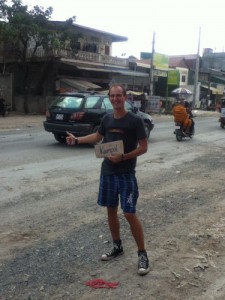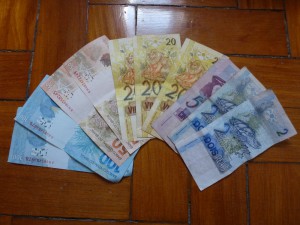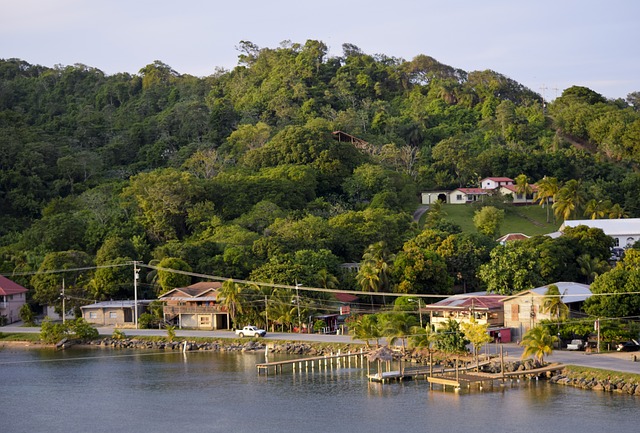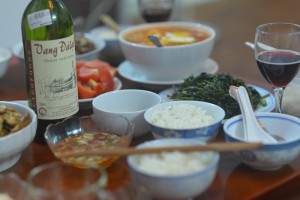Backpacking in Honduras
Honduras is not exactly the classic travel destination in Central America, but that should be reason enough for every backpacker to go there and discover the country. You can be sure that the trip is worth it, because Honduras has a lot to offer in a relatively small area. You can hang out on fantastic beaches both on the Atlantic and the Pacific, dive and snorkel on coral reefs teeming with submarine life, and also experience the diverse flora and fauna in the almost untouched primeval forests.
If you are still looking for some culture, take a look at the old Mayan ruins. Discover the untouched virgin forests in Honduras for example in the Cusuco National Park or relax on the dream beaches of the Islas de Bahia, to which Utila, Roatán, Guanaja and the Isla Hog belong. A real paradise for diving and snorkelling enthusiasts. Impressive Mayan ruins await you in Copán. And at Lago Yojoa you can enjoy the local fish dishes for which the region is famous. The Río Plátano Biosphere Reserve is the largest biosphere reserve in Central America.
Tradition and culture in Honduras
The Hondureños are not their own ethnic tribe, but are made up of various indigenous tribes and immigrant groups. Of the total 8 million natives, only 8% are white, 1% black, 6% indigenous and the rest is a mishmash of all. Such a motley mixture inevitably leads to many different rites and traditions, with the Catholic festivities towering by far.
You may come into contact with eight ethnic indigenous and Afro-American groups during your visit, including Pech, Tawahka, Misquitos, Tolupanes, Garífunas and Lencas. All but the Lencas have kept their languages. You can visit the bad luck inside the organic reserve Río Plátano in La Mosquitia and in villages of the district of Olancho.
The Tawahka people live in the centre and south of the state of Gracias a Dios, especially along the Río Patuca. You will encounter very different cultural currents, which are expressed in dances, music and instruments. Long before the colonization by the Spanish conquerors, the indigenous tribes played wind and percussion instruments such as the Aerófonos, Rana de Barro de Yaxchilan or the Zampoñas.

Backpacking in Honduras – Cowboys
Poverty and Crime in Honduras
Of course, everyone who wants to travel to Honduras has heard about the poverty and crime in the country. What is certain is that Honduras is one of the poorest countries in the world. Over 70% of the population lives below the poverty line. That does not mean that there is nothing, it is as always only unfairly distributed. Nevertheless, in recent years there has been a significant increase in foreign investment, especially in the tourism sector, which is due to a more stable political situation in the country. But much remains to be done.
Because before 1990 the murder rate in Honduras was only 10 per 100,000. Over the years this number has risen to almost 100. Since a few years it has decreased noticeably. But you should know that most of the crimes take place in only four departments and there only in very lively and infamous zones contaminated by drug gangs. Tourists hardly ever suffer any damage. Stay away from the dangerous regions of Cortés, Atlántida, Yoro and Colón.
Backpacker Route in Honduras
Honduras has a lot to offer for backpackers. Not very interesting are most modern cities in Honduras, but on your trip you’ll discover a lot of architectural remains of the Mayas, which exert a huge fascination. The journey to all even the most hidden destinations may be a bit awkward every now and then, but that’s what makes it so attractive.
If you can get there easily, many go there. When planning your trip through Honduras, you can build up a good mix of culture, adventure and activities. Plan your backpacker trip according to duration and region. Here are a few suggestions for a few backpacker routes and destinations in Honduras with and without suggestions for activities and trips.
Route 1: The classic (15-20 days)
- 2 days Amapala – in the Golf de Fonseca in front of the city are 30 islands
- 2 days Cusuco National Park – with the all wheel drive in the jungle or run
- 4 days of hanging out, diving and snorkelling in the Islas de bahíaUtila, Roatán and Guanaja
- 1 Day Copán Maya Discover Architecture
- Spend 2 days at Lago Yojoa with the locals and get to know the nearby primeval forests.
- 2 days to explore the largest nature reserve in Central America, the RíoPlátanoBiosphere Reserve.
- 2 days Siguatepeque, experience the city in the heart of Honduras.
Route 2: Complete program (32-42 days)
- 2 days Amapala – in the Golf de Fonseca in front of the city are 30 islands
- 2 days Cusuco National Park – with the all wheel drive in the jungle or run
- 4 days of hanging out, diving and snorkelling in the Islas de bahía Utila, Roatán and Guanaja
- 1 Day Copán Maya Discover Architecture
- Spend 2 days at Lago Yojoa with the locals and get to know the nearby primeval forests.
- 2 days to explore the largest nature reserve in Central America, the Río Plátano Biosphere Reserve.
- 2 days Siguatepeque, the city in the heart of Honduras. 2 days Tela – relax at the popular Caribbean seaside resort.
- 2 days Trujillo – Here Columbus landed for the first time on the American mainland.
- 1 day Mosquitia to visit the largest rainforest area in Central America.
- 1 day Comayagua – colonial flair in the former capital city.
- 1 day La Ceiba
- 1 day San Pedro Sula Caribbean seaport
- 2 days Tegucigalpa – capital and with approx. 1 million inhabitants also largest city of the country experience. Here also the nightlife is humming.
- 1 day Gracias – enjoy colonial flair in the pleasant mountain town near the Celaque Park.
- 1 day Puerto Cortes
- 2 Days BeachLife in Omoa
- 2 days rafting and adventure at Rio Canrejal
- 2 days exploring Pico Bonito National Park
- Spend 3 days with the Garífuna Indians at Río Esteban
Travel times in Honduras
Honduras can be visited all year round as it is located in the tropical zone. However, it can get much fresher in the mountainous regions than down on the Caribbean and Pacific beaches. However, it never gets really cold, but the climate is more varied. The lowlands are humid and warm all year round. About 25 degrees are ideal. It usually rains from May to October. In the south it is pouring less than in the north. The weather becomes somewhat opaque during the hurricane season from June to November. Such hurricanes can last a week. Then there is nothing left in the whole country.
Backpacker Budget in in Honduras
Honduras is not exactly the Switzerland of Central America. Sure, where there is a lot of poverty, you won’t find the highest prices there either. As a European backpacker, you will easily manage with 15 to 30 dollars a day, depending on your lifestyle. But it gets more expensive on the tourist islands Islas de Bahia, to which Utila, Roatán, Guanaja and the islaHog belong. The journey will already demand the budget a little bit.
Average prices in Honduras
- Meal simple restaurant 4 Euro
- Meal three courses middle class restaurant 15 Euro
- McDonalds BurgerCombo 4 Euro
- Local beer (0.5 liter) 1,2 Euro
- Imported beer (0.33 liter bottle) 1,5 Euro
- Cappuccino 1,3 Euro
- Coke/Pepsi (0.33 liter) 0,7 Euro
- Water (0.33 liter bottle) 0,5 Euro
At the road stands you can eat for a button and an egg.
Bus and domestic fares in Honduras
The best way to travel through the country is by bus. This is cheap, easy and relatively comfortable. You don’t have to travel super long distances. The biggest distance is from Puerto Lempira (Gracias a Dios) to Omoa (Cortes) with 460 kilometers. From the second largest city San Pedro Sula to Siguatepeque about 110 kilometers away you just pay 14 dollars. Back then the double. Just so that you have an idea. There was once in Honduras a railway network of almost 800 kilometers, but that was private and was operated by the Banana Company. In 1983, the government nationalised the network. Chiquita Brands International maintains a second network, which is only about 200 kilometers long. Visitors can only travel in a single banana tourist train from San Pedro Sula.
Domestic flights in Honduras
Four airlines fly around Honduras. Only the flights from San Pedro Sula and the capital to Roatán and La Ceiba are worthwhile. From Tegucigalpa to Roatan the flight costs about 150 Euro and from San PedraSula to Roatan about 120 Euro round trip.
You can depart from the following international airports
- Aeropuerto Internacional Ramón Villeda Morales San Pedro Sula
- Aeropuerto Internacional Toncontín Tegucigalpa.
- Aeropuerto Goloson La Ceiba.
- Aeropuerto Juan Manuel Gálvez Roatán
Backpacker accommodations in Honduras
In a country like Honduras, there are all kinds of accommodations, but there are only a few of the higher class 5-star hotels. Only in the capital and some selected locations there are the houses of well-known international hotel chains. However, there are overnight accommodations spread all over the country, like camping, huts at lakes or hostels at beaches or in the cities. In a country that is not exactly at the top of the list, nor in the middle of the best travel destinations in the world, and for reasons that have less to do with the range of spots, but all the more to do with safety, overnight stays are logically not exactly expensive. Beds in a dorm of a hostel in Honduras cost between 7 and 15 euros per person per night. Let’s have a look at the average prices according to Hostelworld for a bed in a dorm in different places of the country.
- San Pedro Sula 13 Euro
- La Ceiba 8 Euro
- Copan Ruinas 7 Euro
- Roatan 10 Euro
- Utila 9 Euro
- Tegucigalpa 12 Euro
Bed and Breakfast is also available in Honduras. Here you have to lay down a bit more. But this can be worthwhile for two people. In San Pedro Sula an overnight stay in a Bed and Breakfast costs about 25 Euro, in La Ceiba about 20 Euro. In Roatan on the islands about 27 Euro and in the capital you have to pay about 40 Euro. Also quite expensive is this type of accommodation in Santa Rosa de Copan, where the room usually costs 30 euros. Cheaper again at Lago de Yojoa with 23 Euro. You should know that there are almost no hotels of the middle category in Honduras.
This has to do with the fact that the “rich” foreigners are accommodated in the top shops or in the very simple dosshouses. The same applies to the locals. There is hardly a middle class in Honduras. What can be worthwhile, however, are accommodations on a coffee plantation or you take your tent and spend the night in the national parks. Camping in the wild is not a problem, but should not be considered for safety reasons.

Backpacking in Honduras – Roatan
Backpacker Trips, Tips & Highlights in Honduras
If you are in Honduras, you can choose between 5 different interest groups or you can just do them all. You can expect beautiful beaches in the Caribbean as well as in the Pacific. You can snorkel and dive at one of the most beautiful reefs in South and Central America.
The fascinating world of pre-colonial architecture awaits you, and you can experience the exuberant culture of the Hondureños. You can also go up into the mountains or explore deep caves. Hard trekking tours lead into the deepest jungle and on extended kayak tours you get to know Honduras from a completely different side.
Backpacker Highlights in Honduras
Water sports and dream beaches in Honduras… If the water attracts you, you’ll have to go either to Roatán or Cayos Cochinos. Around Roatan you will find more than 120 dive sites. If you don’t start a diving course there, you won’t do it anywhere. Especially since it is still quite inexpensive there. You can pay there by the way also quite well with American dollar.
It is similarly dreamlike around Cayos Cochinos. The island archipelago consists of the two small islands Cayo Mayor and Cayo Menor as well as 13 other small islands, on which you can play a little Robinson Crusoe. The archipelago can be found about 12 kilometers northwest of the city of La Ceiba. There you’ll also find a very unique reptile, the jamonegros in German Blackbreasted Guan.
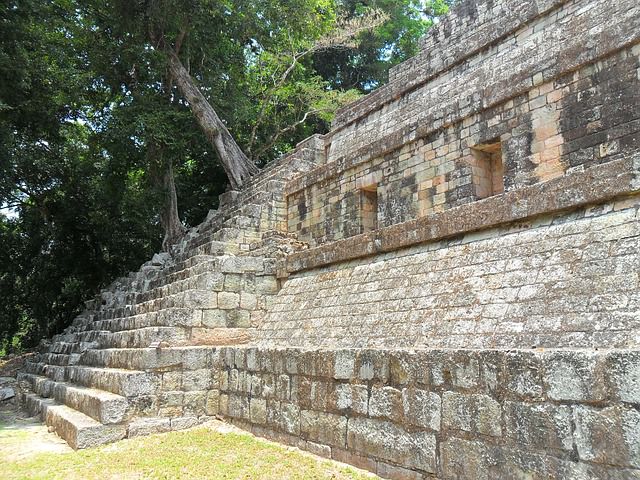
Backpacking in Honduras
How you can expect a unique flora and fauna in Honduras at all. Be prepared for a concentrated load of biodiversity consisting of an estimated 8000 plant species, more than 250 reptiles and amphibians, over 700 bird species and 110 mammal species. You can meet some of them in the Biosfera de Río Plátano, where you’ll be able to fight your way through the bushes in the last intact rainforest area of Central America.
The destination must always be La Moskitia, which stretches along the country’s barely visited north-eastern Caribbean coast. In the middle of this wild region lies the Rio Plátano Biosphere Reserve, which is a UNESCO World Natural Heritage Site because of its biodiversity. The best way to get to know the best spots in the region is to visit the so-called La Ruta Moskitia.
Arts and crafts – archaeology and good food
Great handicrafts can be found in the two highest cities of the country in La Esperanza and Intibucá. At 1700 m it is also pleasantly cool. If you are interested in archaeology, there are most of the buildings in CopanRuinas to discover. The town is located 12 kilometres from El Florido on the border with Guatemala. This also means that you can travel from Guatemala by shuttle bus.
You have to try the allegedly best seafood dishes of Honduras in San Lorenzo. The whole city seems to be focused only on the sea. From there we also offer tours into the seemingly impenetrable mangrove forests.
Backpacker Insider Tips in Honduras
Just a few kilometres from Tela lies the Eco Finca San Silvestre, where you can discover the rich biodiversity of the region and many waterfalls in the middle of an untouched natural landscape on 1 to 4 hour hikes. Another hot adventure tip is a kayak trip in PN Punta Izopo. The natural adventure park extends over an area of more than 115 km2, where you can really let off steam. Kayal tours lasting several hours will take you to the heart of the protected region, where a great biodiversity awaits you.
You should already take 2 to 3 days to explore the impenetrable cloud forests of the country with a guide you hire in Tela. Start at the Parque Nacional Cusuco, then continue to the Parque Nacional Cerro Azul Meambar. Predators like the ocelot or caimans are not uncommon. The respective trekking tours in the different parks can extend over several hours. There are even adventure trips offered in Tela, which extend over 10 days. There are rafting, caving, rafting and lots of running.
If you are more into heights, then venture an ascent to the Pico Bonito in the national park of the same name. If, on the other hand, you are drawn into the depths of the earth, then the cuevas de Taulabe (caves) lure you to an exploration tour.
Here are all the national parks in the country that invite you to visit them. No one is like the other. You will surely discover something new again and again.
- Parquenacional Capiro y Calentura
- Parquenacional Celaque
- Parquenacional Cerro Azul
- Parquenacional Cerro Azul Meambar
- ParqueNacional Cusuco
- Parquenacional Jeanette Kawas
- Parquenacional La Muralla
- Parquenacional La Tigra
- Parquenacional Montaña de Comayagua
- Parquenacional Montaña de Yoro
- Parquenacional Montaña Santa Bárbara
- Parquenacional Montecristo Trifinio
- Parquenacional Patuca
- Parquenacional Pico Bonito
- Parquenacional Pico Pijol
- Parquenacional Punta Izopo
- Parquenacional de la Sierra de Agalta
Some like the Parque Nacional La Muralla or the Parque Nacional La Tigra are real insider tips, about which there is not even a German Wikipedia entry. So there is a lot to experience. And as so often we advise you to explore the country slowly and urgently and not to check any list fast. Just get stuck where you like it and enjoy life.
Food & Drinks in Honduras
The gastronomic offer is as diverse as the music itself. This is hardly surprising, since the locals are able to draw on practically everything they have to offer. The influences of Honduran cuisine are based on many roots. Not only the indigenous people have immortalized their culinary traces in the local dishes, but also the numerous immigrants, who have flowed into the country in various waves through the centuries, have incorporated culinary influences into the recipes. Seafood, tropical fruits as well as beans and meat form the basis for many recipes. Corn also serves as the basis. Of course, vegetables are also grown in the interior and dairy products such as cheese are also available.
Coffee is a national drink in Honduras, which you can get everywhere for a ridiculous price. Typical dishes and drinks of the country, which are however partly only offered in the respective region, are atol, a fermented corn drink that the Aztecs already enjoyed. The typical baleada on tortilla basis filled with eggs, beans, meat and whatever else is there, you can get at stalls all over the country. Somewhat exotic is the dish Yucacon Chicharrón where Yuca is cooked soft and then enriched with hot spices. There’s meat with it. Let it taste you. The cuisine of the country is divided into different regions.
- North
- Mountainous country
- South
- Western world
In all regions typical regional dishes are served. Sure, more fish and seafood on the water, corn and vegetables in the country. Delicious is the Pan duro “Totopostes” from Santa Rosa de Copán. Pan duro meant as much as “hard bread”. You will also find the popular pasteles de picadillo – corn empanadas filled with meat or vegetables – everywhere.
Drinking in Honduras
There is beer in the whole country. Local beer is not exactly the hammer, but enjoyable. Typical for the country is Güifiti. This is an alcoholic drink based on herbs, anise and plants that grow in the north of the country on the coast. If you want guaro, don’t drink too much of it. The popular schnapps is fully pure and causes even the next day still painful traces in the head area. Timochenco or the Vino de coyol or an apple wine – Vino de manzana – also serve to clap your way.
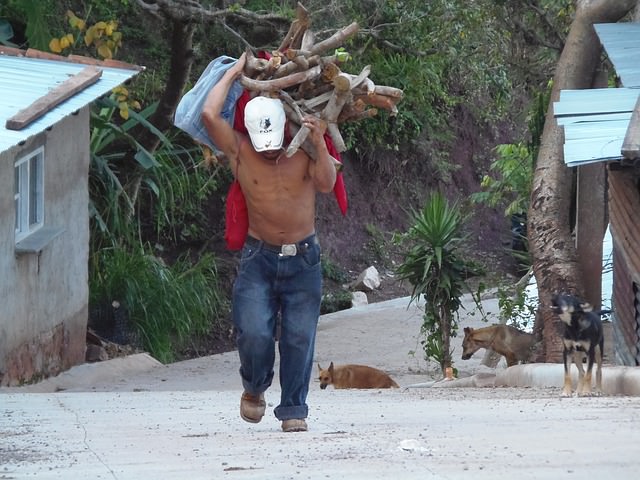
Backpacking in Honduras – Work
Backpacker Visa and Vaccinationin Honduras
The entry regulations for Germans according to the Federal Foreign Office.
Entry requirements for German citizens with valid travel documents. Entry for German citizens is possible with the following documents:
- Passport: Yes
- Provisional passport: Yes
- Identity card: No
- Temporary identity card: No
- Children’s passport: Yes
Visa
For German citizens, a visa-free stay in the so-called “CA-4” region Guatemala, El Salvador, Honduras and Nicaragua up to a total of 90 days is possible with a passport. The residence permit is issued free of charge upon entry. It is essential to ensure that the passport is stamped with an entry stamp. An extension of 90 days can be applied for at the immigration office.
Vaccinations & medical information
The Federal Foreign Office recommends standard vaccinations according to the current vaccination calendar of the Robert Koch Institute. This also includes vaccinations for adults against tetanus, diphtheria, pertussis (whooping cough), if necessary also against mumps, measles, rubella (MMR) and influenza. Travel vaccinations are recommended for hepatitis A, for long-term stays for hepatitis B as well as for rabies and typhoid fever in case of special exposure.
Malaria, chikkungunya, leishmaniasis, leptospirosis and dengue are common.


